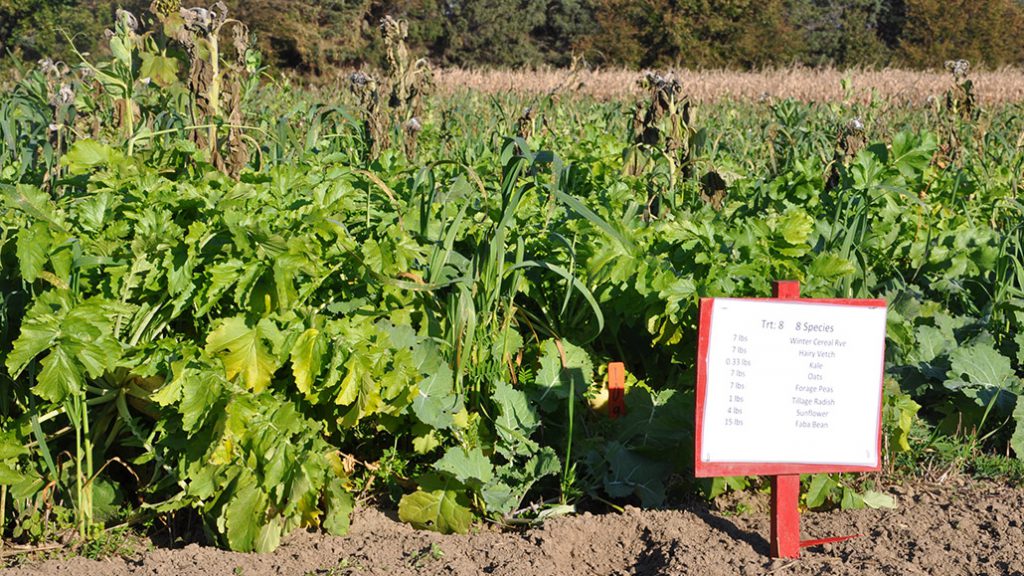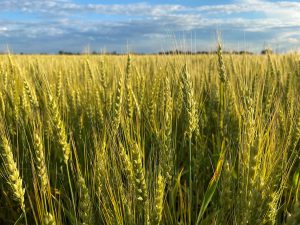A root-focused mindset
BETTER QUALITY AND HIGHER YIELDS

HEALTHY, PRODUCTIVE RELATIONSHIPS are an important thing — particularly in the plant world.
According to Jill Clapperton, a soil scientist and co-founder of the soil health management company Rhizoterra Inc., practices which support better relationships between roots and the soil ecosystem, as well as between roots themselves, are the key to ecological sustainability and higher profits.
DON’T DESTROY THE HABITAT
Higher water holding capacity, greater nutrient availability and recycling, a greater diversity of organisms, and a variety of other factors all constitute good soil. For Clapperton, this translates to a healthy habitat for all organisms residing below the surface.
Everything hinges on the maintenance of good soil structure, however.
Speaking during the Innovative Farmers’ Association of Ontario’s 2021 conference, Clapperton said the first consideration in building soil structure should be tillage. Or more specifically, not disrupting or destroying underground habitats with excessive tillage.
Plant matter is the second consideration. Exudates from roots and plant litter both contribute carbon to the soil, but the availability of that carbon to soil organisms varies. Efforts at increasing soil carbon and overall organic matter require plant residues below the ground rather than on the surface. Indeed, she encouraged viewers to “think about it like you are growing roots,” not just surface greenery.
ROOTS PROMOTE MICROBIAL ENVIRONMENTS
The role of roots within the soil ecosystem is what makes them comparatively special, Clapperton says. She describes them as integral to the development of soil biota communities — and healthy food webs of micro and macro-organisms — within the rhizosphere (the region of soil around the plant roots).
Mycorrhizal fungi, for example, rely on plant roots as a host. Conversely, the fungi increase the rate of photosynthesis within plants, as well as the movement of soil carbs, amino acids, and organic acids to roots, creating a mutually-beneficial feedback loop.
“This is the key area of the entire field…it’s like an expanding area for nutrient uptake,” she says, reiterating microorganisms feed on soil organic matter and promote nutrient cycling as they develop. Improvements in one thus bring improvements in the other.
“The whole system is designed to work together for plants to thrive.”
CORN AND SOYBEANS INSUFFICIENT
Unfortunately, Clapperton says standard corn-soybean rotations do not generate enough roots to have lasting, positive impacts on soil health. The issue is compounded by modern plant genetics, which allow farmers to produce and remove high yields and large amounts of above-ground biomass. As a consequence, she says farmers need to take additional steps to “put something back.”
An avenue to that goal includes working with plant breeders to strike a balance between soil organisms and ourselves — that is, develop crop genetics which balance the amount of biomass being generated above and below ground.
Cover cropping is another, more immediate solution. This is particularly true for producers operating in areas with sufficient moisture, as well as time to plant covers between harvest and the onset of winter conditions. Generally, employing a mix of plant species rather than a single specie is preferrable from an overall soil health standpoint as it more closely mimics natural biological processes.
INTERCROPPING — AN ALTERNATIVE OPTION
Planting companion crops (intercropping) is another strategy, and one which Clapperton has had much personal success on her farm in Washington state.
Because plant species differ in their ability to acquire nutrients, she says, systems which allow different types of roots to mingle can improve nutrient uptake. Like the relationship between mycorrhizal fungi and roots, that is, roots themselves can share resources to improve overall quality and yield.
The trick is finding what crop combinations best support each other. Legumes such as alfalfa and soybeans, for example, can effectively feed a corn crop throughout the growing season. As a cover crop, the former pair would only make nutrients available for the corn crop to access on its own.
Potential yield differences aside, her research suggests companion cropping in this way drastically reduces variations in water-use efficiency. She adds farmers should be mindful not to mix crops in a way which could cause harvest troubles, or impede above-ground growth (e.g. by planting climbing species, such as peas, too early).
Overall, she encourages farmers to use roots as a way to work with — rather than against — natural process.
“Monoculture farming sets us up to fail because it’s not a natural system,” says Clapperton. “Everything needs the support of a community. When we are just growing one thing, we are always going to struggle.” •
























